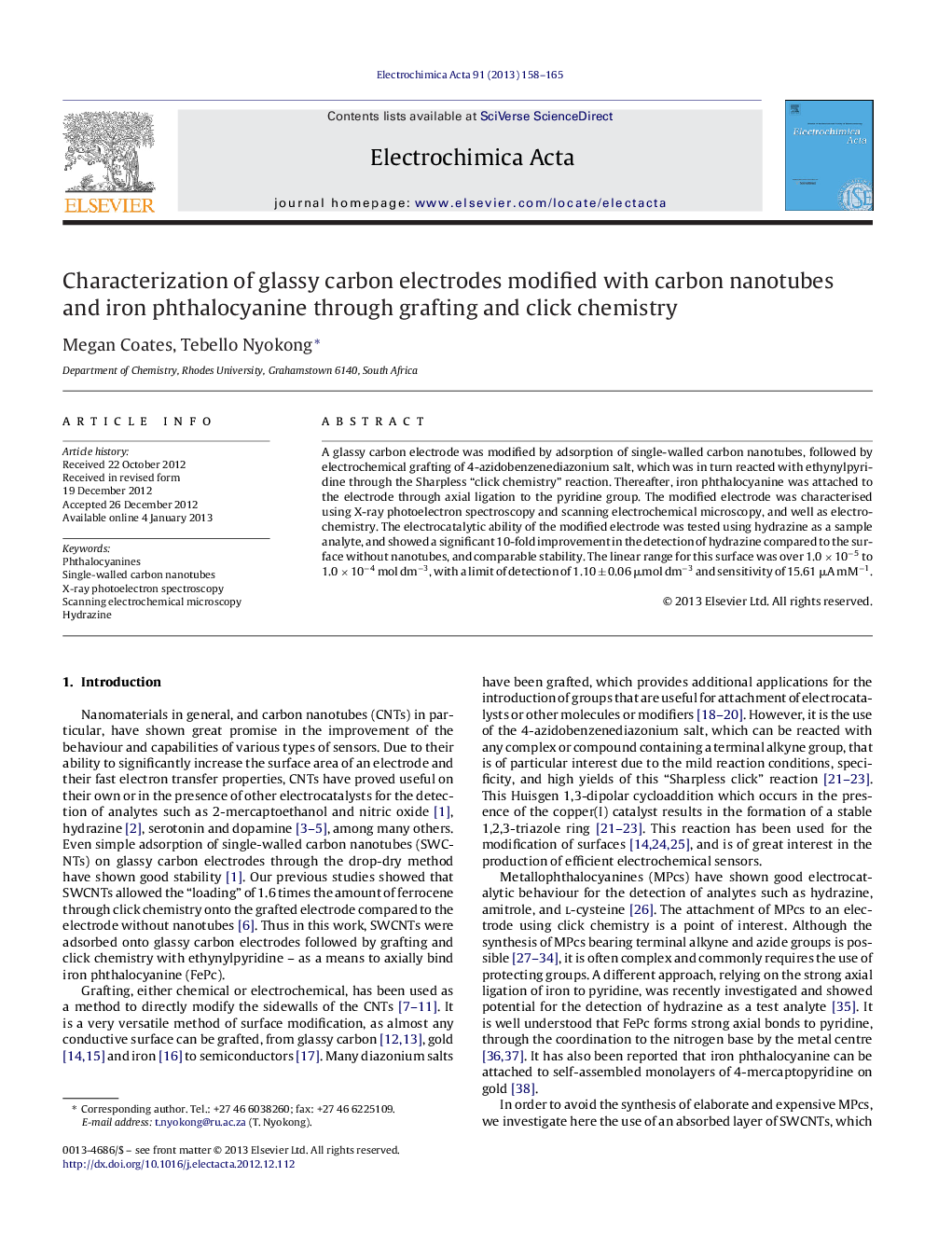| Article ID | Journal | Published Year | Pages | File Type |
|---|---|---|---|---|
| 186988 | Electrochimica Acta | 2013 | 8 Pages |
A glassy carbon electrode was modified by adsorption of single-walled carbon nanotubes, followed by electrochemical grafting of 4-azidobenzenediazonium salt, which was in turn reacted with ethynylpyridine through the Sharpless “click chemistry” reaction. Thereafter, iron phthalocyanine was attached to the electrode through axial ligation to the pyridine group. The modified electrode was characterised using X-ray photoelectron spectroscopy and scanning electrochemical microscopy, and well as electrochemistry. The electrocatalytic ability of the modified electrode was tested using hydrazine as a sample analyte, and showed a significant 10-fold improvement in the detection of hydrazine compared to the surface without nanotubes, and comparable stability. The linear range for this surface was over 1.0 × 10−5 to 1.0 × 10−4 mol dm−3, with a limit of detection of 1.10 ± 0.06 μmol dm−3 and sensitivity of 15.61 μA mM−1.
Graphical abstractA carbon electrode was modified by grafting, clicking and axial ligation to iron phthalocyanine, and characterised by scanning electrochemical microscopy and X-ray photoelectron spectroscopy. The modified electrode was used for the detection of hydrazine.Figure optionsDownload full-size imageDownload as PowerPoint slideHighlights► Glassy carbon electrode is modified with single walled carbon nanotubes. ► Through grafting, click chemistry and axial ligation, iron phthalocyanine is linked to the modified electrode. ► The electrode is characterised by X-ray photoelectron spectroscopy and scanning electrochemical microscopy. ► The modified electrode is used to detect hydrazine as a test molecule.
